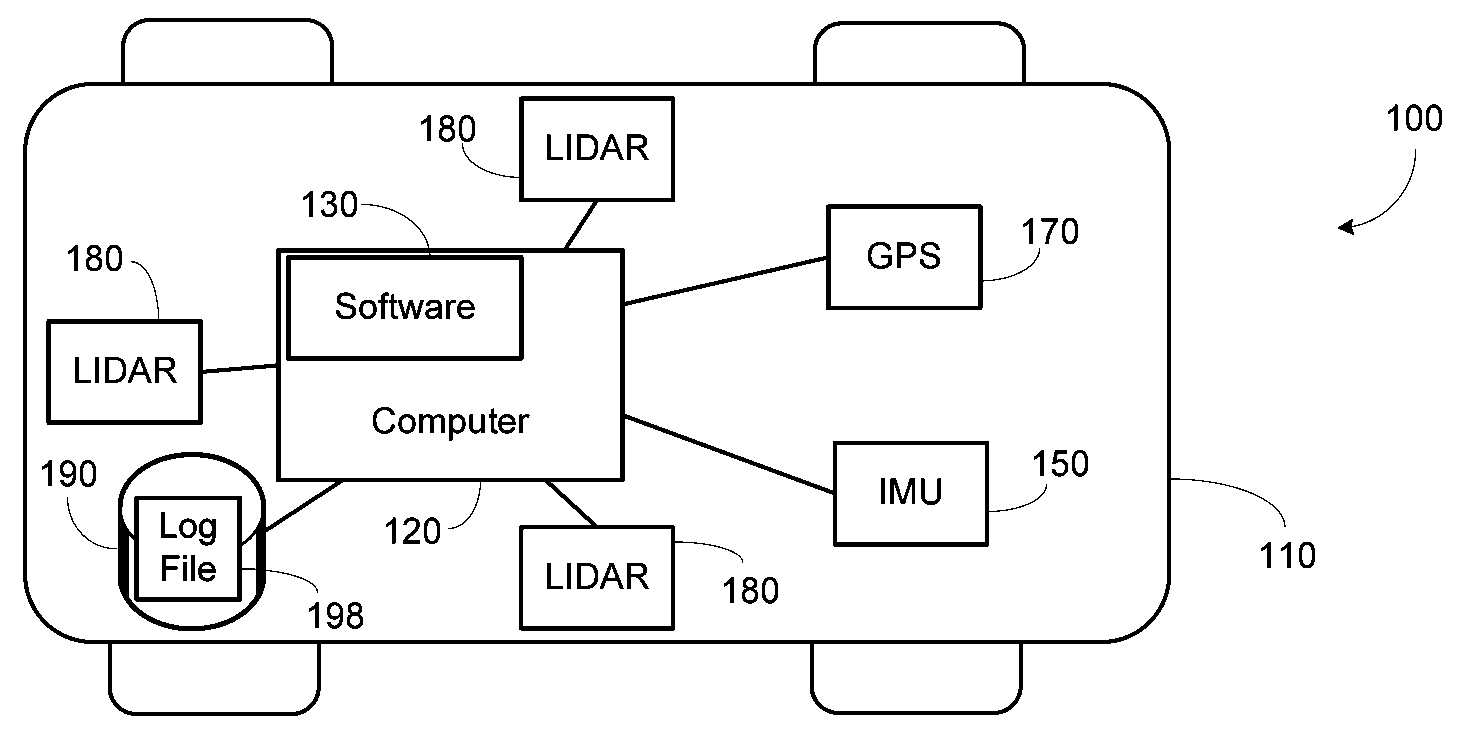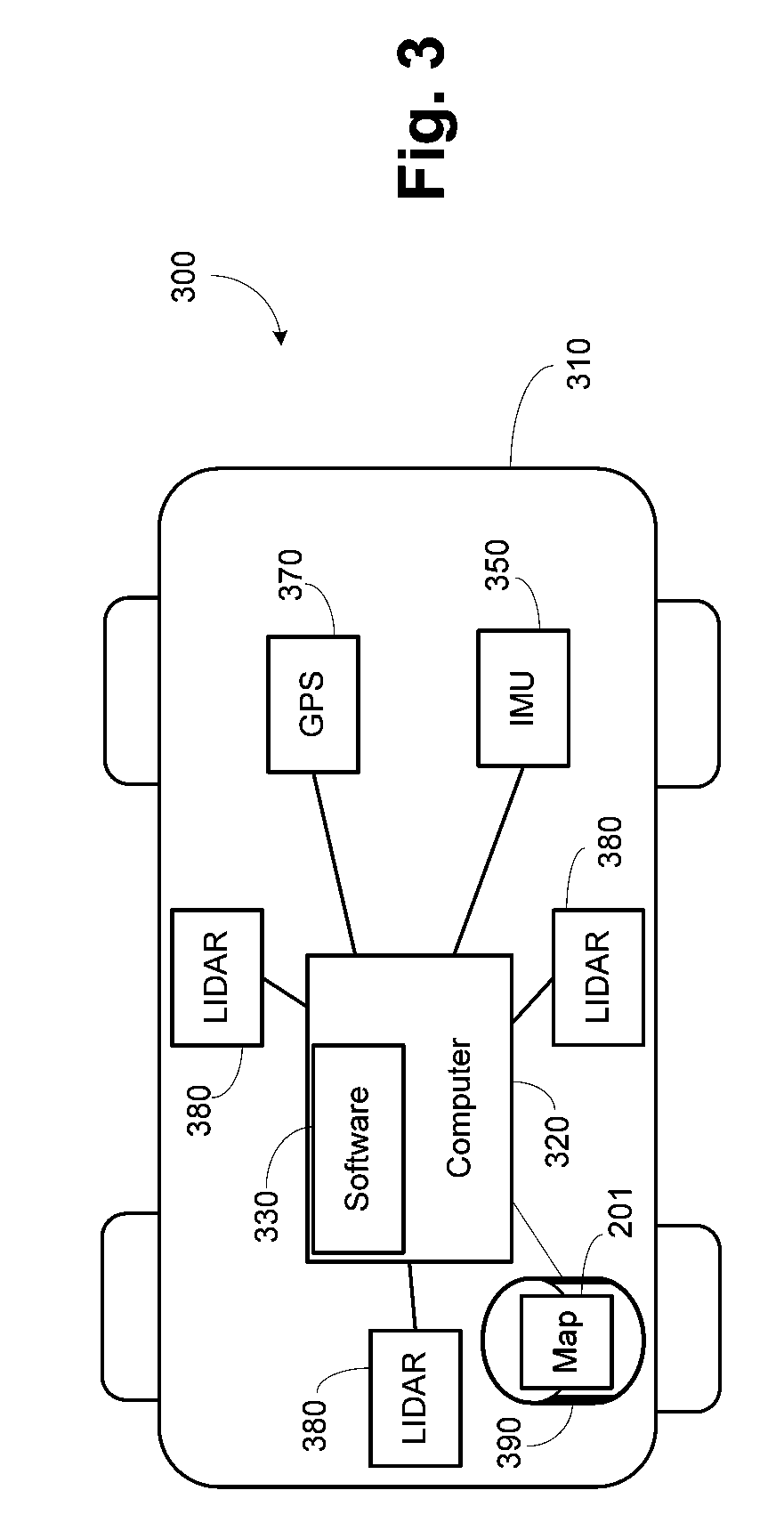Pobabilistic methods for mapping and localization in arbitrary outdoor environments
a technology of outdoor environment and probability, applied in the direction of navigation instruments, maps/plans/charts, instruments, etc., can solve the problems of not meeting the needs of many other applications, insufficient on its own for an array of navigation-related problems, and the best gps system available often yields worse accuracy than half a meter, etc., to achieve the effect of maximizing the likelihood of observed data
- Summary
- Abstract
- Description
- Claims
- Application Information
AI Technical Summary
Benefits of technology
Problems solved by technology
Method used
Image
Examples
Embodiment Construction
[0024]In an unmanned vehicle, driving autonomously on today's roads, it is necessary to obtain an accurate position estimate that provides a precise location within a lane, with a precision of a few centimeters, and in GPS-denied environments (e.g., in a tunnel). In the preferred embodiment a human first drives a vehicle on a network of roads, with the vehicle recording position data from a GPS receiver and scene data from laser scanners, which are processed into a high-resolution map file. Later, a vehicle, manned or unmanned, drives on this same network of roads, and using its sensors is able to determine its position on the road relative to the map file with significantly greater accuracy than GPS alone affords. It can also determine its position when GPS is temporarily unavailable, e.g., in narrow urban canyons. The resulting precision and reliability is a key prerequisite of autonomous unmanned ground vehicle operation.
[0025]In an in-car navigation system, the ability to track ...
PUM
 Login to View More
Login to View More Abstract
Description
Claims
Application Information
 Login to View More
Login to View More - R&D
- Intellectual Property
- Life Sciences
- Materials
- Tech Scout
- Unparalleled Data Quality
- Higher Quality Content
- 60% Fewer Hallucinations
Browse by: Latest US Patents, China's latest patents, Technical Efficacy Thesaurus, Application Domain, Technology Topic, Popular Technical Reports.
© 2025 PatSnap. All rights reserved.Legal|Privacy policy|Modern Slavery Act Transparency Statement|Sitemap|About US| Contact US: help@patsnap.com



